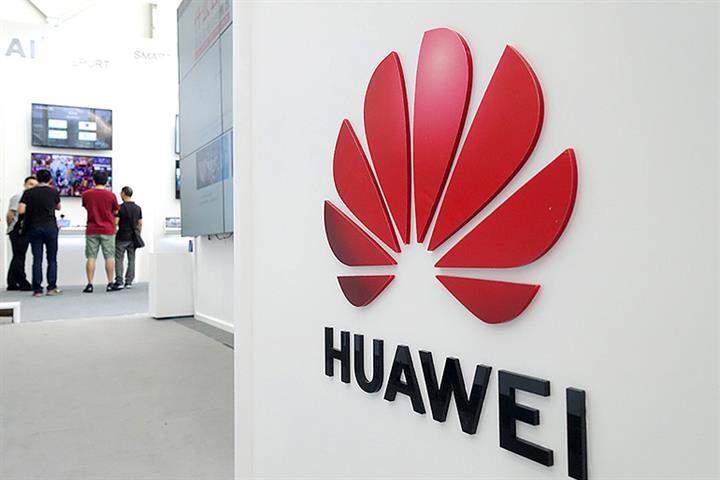 Huawei Has Rode the Storm and is On the Up Again
Huawei Has Rode the Storm and is On the Up Again(Yicai Global) Dec. 15 -- The mainstream media has in recent months made much of the fate of Huawei: China’s largest telecommunications company. If you listen to the conventional narrative, it is commonly boasted that the United States crushed the company through its ferocious and coercive campaign against it last year, of which involved not only adding it to the Commerce Department Entity List, but also applying the “foreign direct product rule” to it, cutting it off from the Global Semiconductor Supply Chain. As the Wall Street Journal proclaimed: “The U.S. Set Out to Hobble China’s Huawei, and So It Has”.
It’s not hard to see why this perception was widespread. The sanctions did indeed cripple Huawei’s handset business by depriving it of crucial chips, which forced them to spin off their popular brand Honor. The resulting sale and lack of chip sales seen their sales revenue tumble accordingly. In addition, the US also forced numerous allied countries to ban the firm’s participation in their 5G networks, of which included many countries in Europe, Japan, the United Kingdom and Australia.
Although the Biden administration has kept up the campaign against Huawei, such as for example attempting to coerce the United Arab Emirates into removing it from their networks by leveraging a sale of F-35s, there is growing evidence now that Washington’s campaign against the company has reached a high-tide, its leverage has peaked and that as of late 2021, things are starting to look upwards for the company again as it has wrestled to reconfigure its business in light of the brutal campaign against it. Here’s why:
1. Huawei’s Carrier Business is Still Thriving
The damage done to Huawei’s network carrier business by the United States has hurt, especially in losing one of the most lucrative markets. US sanctions were not able to directly cripple this domain as the chips which Huawei uses to power its networks are older and not out of China’s reach. As a result, the company continues, outside of America’s sphere of influence, to be one of the world’s most prominent 5G providers and continues to have strong appeal in developing countries.
As some examples to note: Huawei last week launched a 5G network in Bangladesh with Teletak, recently won a contract with Zain Kuwait to build the same, and is also building a network with TIM in Brazil. The China-Laos railway also opened last week with a built-in 5G network built by the company. Huawei continues to be the world’s largest provider of 5G patents. In addition, countries who have excluded the firm have suffered negative repercussions by narrowing the space of the market and driving up costs, failing to broaden the number of suppliers. The Open RAN alliance which was also designed to try and replace the firm has been widely perceived as a disaster and unworkable, with participating firms even quitting.
2. Huawei’s business reorientation has been rapid
In order to offset the damage of US sanctions, Huawei has pursued a reorientation of its business towards IT and software, which does not depend on material supply chains. In doing so, the firm has pledged up to $300 million for tech start-ups in South East Asia, as well as 35 million for Europe, has invested in the opening of IT academies around the world, and also built a business strategy around its operating system HarmonyOS with a focus on establishing “the internet of things”. Likewise, the firm has also aggressively ramped up its business solutions sector which has continued to grow, signing hundreds of MoU’s in countries all over the world.
3. Huawei is becoming more self-sufficient
The most punishing aspect of the US campaign against Huawei was that it exposed brutally exploited the company’s reliance on US-origin technology in order to prosper globally. This has forced Huawei to address its strategic vulnerabilities and supply chain, specifically in the semiconductor area. Although the company is staying low on the matter, the company is reportedly pursuing the creation of its own foundry in Wuhan which will be used to produce its own 20nm chips, designed by its subsidiary Kirin., which is expected to begin in 2022. These chips are insufficient for smartphones, but will be used to power its “Internet of things” devices such for example, televisions, as well as fortify its networks. There is a long way to go, but it is a significant step forwards in the company’s own strategic independence, as well as the consideration of China as a whole.
In conclusion, in 2021 Huawei effectively reached the bottom. Hit with the most excruciating pressure possible from the US, Washington played all of its cards against the company and utilized maximum leverage upon it. Now logically speaking, and in line with the company’s efforts, the only way is up. Although the new environment it operates in is a lot more hostile, Huawei has vowed to not give up and to one day “reclaim its smartphone crown”. The company will inevitably return stronger and less vulnerable than before, and it may be well looked upon as a huge strategic mistake by Washington in the weaponization of a supply chain against the firm in such a way.